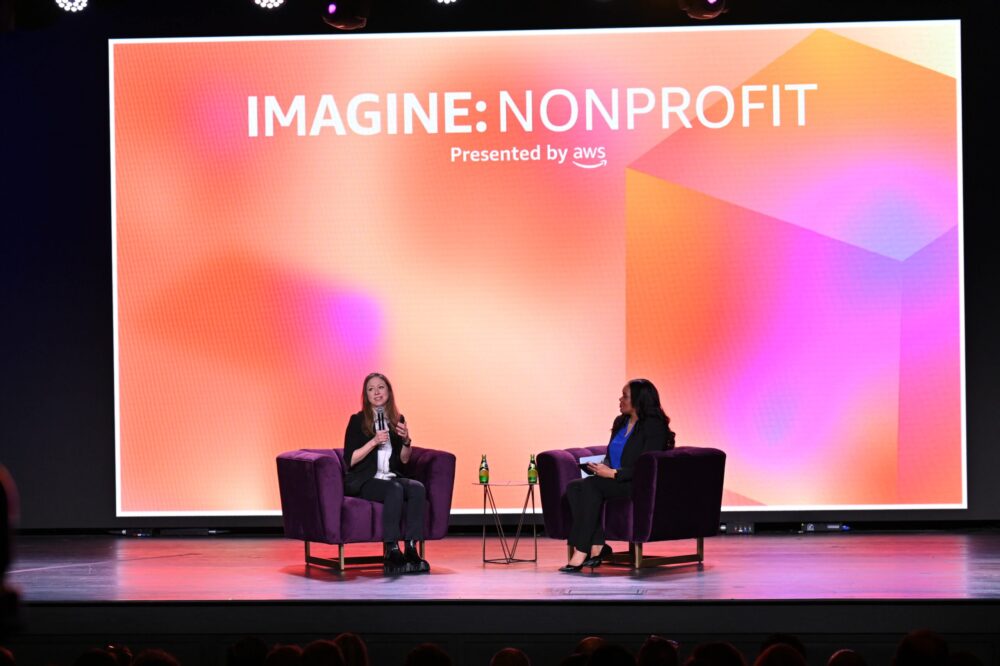At first glance, the tech industry’s sleek image and the granola-heavy nonprofit world don’t immediately go hand in hand.
But, as technologists and nonprofit leaders alike gleaned at the IMAGINE: Nonprofit conference, which Amazon Web Services (AWS) presented Tuesday at Capital Turnaround, there’s plenty of overlap. In fact, the nonprofit world has plenty to gain from the time-saving aspects of tech — especially given its potential for execution at an international scale.
As most panelists noted, one big place the two sectors can meet is in the world of data. For Ryan Fetterman, a security strategist at Splunk, nonprofits need to embrace tech innovation by assessing and defining what makes their organization or mission unique. From there, they can understand the critical assets and functions of the organization, as well as what data sources support these insights; that’s where organizations can find what data they need most.
Still, he noted that it’s key to bring that functionality all the way from the top to the end-user, to ensure a direct impact.
“If you’re securing the information in such a way that I can’t deliver impact on the field, then the outcome is missing,” Fetterman said. “Governance is important, but it only works when we have the full chain from top to bottom engaged in it.”
Data is a huge driver for the entire tech industry and its crossover into the nonprofit world. Still, many noted that it’s not only what data gets collected, but how it’s used. Mark Zimring from The Nature Conservancy, who leads a project monitoring sea life on fishing boats, noted that video cameras on boats don’t solve any issues on their own. The conservancy thus had to figure out the best way to store and use the constituent data. For the org, that ultimately meant identifying risks of captains misreporting something that was captured on camera.
“At the end of the day, cameras on fishing boats, that does not solve problems,” Zimring said. “It’s taking that data and using that data to do things differently that solves problems.”
For some, that will mean firming up work that already exists. Stop Soldier Suicide CEO Chris Ford said that the org uses tech to lower suicide rates among veterans. The nonprofit does this by analyzing digital devices and finding markers in the days leading up to suicide, including changes in sleep behaviors and heightened experiences and expressions of anger.
“We wanted to get these insights to improve our outreach and inform our clinical care services and delivery,” Ford said. “And because we already serve the highest-risk veterans, we used that information as a test center to improve and enhance our outreach and clinical care and test our data and technology insights.”
This can also extend beyond a company’s mission and into a core component of most nonprofits: fundraising. As DonorSearch AI Senior VP Nathan Chappell noted, in this day and age, organizations have more information about who’s giving and why than ever before. From this, he’s figured out how to measure a donor’s connection to the organization, or the idea that someone donates more money to an organization based on their values and their experience with it, as opposed to how wealthy they are. For organizations, that means honing in on precision and personalization to donors. For tech, that can focus on what Chappell said AI does very well: making moves in real-time and at scale.
“How do you help them do a better job faster?” Chappell said. “That’s really where the technology comes in and that’s where this balance, this equilibrium, of art and science need to happen.”
In her philanthropic work, the Clinton Foundation’s Chelsea Clinton said that she uses data in everything. But she feels some instances do not require finding and tracking more data, which can cause harm, as much as using what’s available in the right way. That can mean organizations knowing what they do and their track record, and using that to figure out when they’re the right partner to solve an issue. Or, she said regarding issues like women’s reproductive health, the answer might not be tracking more data, but knowing the value of what already exists and how important it is for women’s health and agency.
“For those of us that love data, I think we always need more of it,” Clinton said. “But sometimes we have enough data to know what the right course of action is.”
Still, this incorporation requires more than just adding some tech components and algorithms to an existing nonprofit. The future of tech and nonprofit work, according to AARP VP of Software Engineering Samir Shah, necessitates finding ways to connect these problem-solving methods with the work of these businesses every day and pushing through any resistance.
“We’re breaking down the silos between technology and the business,” Shah said. “They don’t look at us as these folks that they bring it afterward. We’ve got a seat at the table and we’re solving business problems, powered by technology.”







